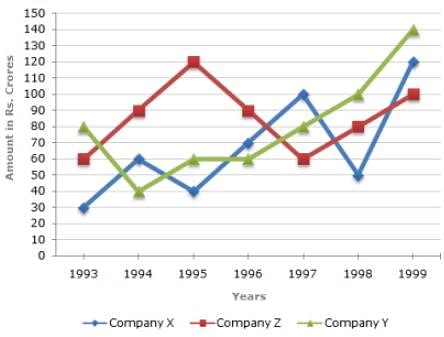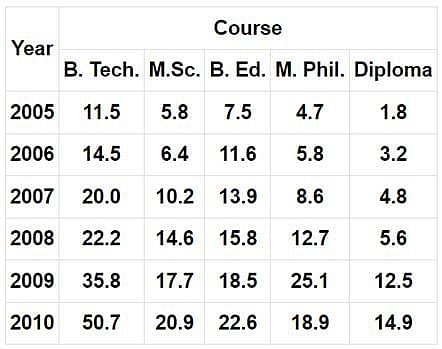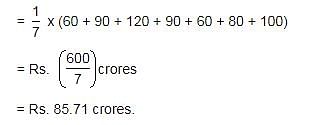CISF Head Constable Mock Test - 4 - CISF Head Constable MCQ
30 Questions MCQ Test CISF Head Constable Mock Test Series 2024 - CISF Head Constable Mock Test - 4
You are the newly appointed financial controller in LMB Ltd., a large private engineering company. This is your first appointment in industry having undertaken your training at a large accountancy firm where most of your experience was gained in the audit of large NSE 500 clients. LMB Ltd. makes components which are used in the manufacture of various household products and it has a wide customer base from large household names through to small local private businesses.
One of your first tasks is to undertake a view of aged debtors. Whilst undertaking your review you find that a small number of customers have credit balances on their sales ledger accounts. The amounts relate to invoices which are now over 9 months old and which appear to have been paid twice. You find this odd and decide to raise the issue with your boss, Dushyant, the Financial Director, at your next meeting.
The following morning, Dushyant calls you into his office and asks you how you are settling into your position. You respond that, although you are still finding your feet, you have been making a major effort to get up to speed with the company's business and systems and controls. Dushyant appreciates your enthusiasm and is pleased that he has managed to recruit someone so enthusiastic.
Dushyant then asks whether anything has come to your attention so far. You advise him of what you have found in relation to the customers who appear to have paid twice. Dushyant laughs and tells you that it balances out in the end.
Furthermore, he produces copies of letters from a file which are addressed to the Financial Directors at the respective customers informing them of their company's overpayment. You return to your desk - rather bewildered by his comments. Customers have overpaid and he knows this to be the case, yet he has no intention of returning their money unless prompted by the customer.
You find it perplexing to think that the Financial Directors of the companies that have overpaid have not responded on being notified about the outstanding invoices.
Q. A&M Ltd. was one of the customers that had paid twice. Despite being notified about the same, the company had not responded to the formal communication sent by LMB Ltd. Yet, the Financial Director of A&M Ltd is very distraught that LMB Ltd. did not issue a refund sooner, especially when the two companies continued their association. A&M Ltd. has now threatened to exit all contracts with LMB Ltd.Which of the following steps would you take to salvage the situation?
| 1 Crore+ students have signed up on EduRev. Have you? Download the App |
Direction: In each question below is given a statement followed by two conclusions numbered I and II. You have to assume everything in the statement to be true, then consider the two conclusions together and decide which of them logically follows beyond a reasonable doubt from the information given in the statement.
Statements: The T.V. programmes, telecast specially for women are packed with a variety of recipes and household hints. A major portion of magazines for women also contains the items mentioned above.
Conclusions:
- Women are not interested in other things.
- An average woman's primary interest lies in home and specially in the kitchen.
Directions: Read the given information carefully and answer the questions given beside:
Nine persons – Chaya, Dimple, Beena, Ajit, Jaya, Fatima, Gagan, Hemant and Kaushal – are sitting in a straight line facing north, but not necessarily in the same order.
Beena is fourth to the left of Gagan; Fatima is fourth to the right of Chaya and second to the left of Kaushal, who is fifth to the right of Ajit. Dimple is not an immediate neighbour of either Kaushal or Beena. There are only three persons between Jaya and Ajit. Gagan is second to the right of Chaya.
Q. Who among the following sit at the extreme ends of the line?
Study the following line graph and answer the questins.
Exports from Three Companies Over the Years (in Rs. crore)

Q. In how many of the given years, were the exports from Company Z more than the average annual exports over the given years?
The average rainfall for the first 3 days out of five days was recorded to be 0.45 inches. The rainfall on the last two days was in the ratio 2:3. The average of five days was 0.40 inches. What was the rainfall on the last day?
Vinod makes a deposit of Rs. 100,000 in Syndicate Bank for a period of 2 years. If the rate of interest be 12% per annum compounded half-yearly, what amount will he get after 2 years?
Nishu and Archana can do a piece of work in 10 days and Nishu alone can do it in 12 days. In how many days can Archana do it alone?
The sum of two even numbers is six more than twice of the smaller number. If the difference between these two numbers is 6, If the larger number lies between 15 to 25 Which is the smaller number?
A number is divided by 2, 3, 4, 5 or 6, reminder in each case is one. But the number is exactly divisible by 7. The number lies between 250 and 350, the sum of digits of the number will be
When the price of rice is increased by 30 percent, a family reduces its consumption such that the expenditure is only 20 percent more than before. If 50 kg of rice is consumed by family before, then find the new consumption of family (approx.)
A man has 4000 rupees in his account two years ago. In the first year he deposited 20 percent of the amount in his account. In the next year he deposited 10 percent of the increased amount in the account. Find the total amount in the account of the person after 2 years.
Vijay bought some pens for Rs. 540. He lost 2 pens on his way back to the shop. Then, he sold the rest of the pens at Rs. 6 more (per pen) than what he paid for them. On the whole transaction, Vijay gained 10% on his outlay. How many pens did Vijay buy?
Directions: Study the following table carefully and answer the questions that follow:
Semester fees (In Rs. thousands) for five Different Courses in 6 different years.

Q. What was the total semester fee charged for all the course together in the year 2006?
Find out the Synonym of the following word:
ADVERSITY
Find out the Synonym of the following word:
INDICT
Read the each sentence to find out whether there is any grammatical error in it. The error, if any will be in one part of the sentence. The letter of that part is the answer. If there is no error, the answer is 'D'. (Ignore the errors of punctuation, if any).
Read the each sentence to find out whether there is any grammatical error in it. The error, if any will be in one part of the sentence. The letter of that part is the answer. If there is no error, the answer is 'D'. (Ignore the errors of punctuation, if any).
In the following questions four alternatives are given for the idiom/phrase italicised and underlined in the sentence. Choose the alternative which best expresses the meaning of idiom/phrase.
Q. How long will the people put up with the increasing economic hardships?
Directions: Rearrange the following six sentences (1), (2), (3), (4), (5) and (6) in the proper sequence to form a meaningful paragraph and then answer the question given below.
1. Officials of the Russian-American Company reasoned that a permanent settlement along the more temperate shores of California could serve both as a source of food and a base for exploiting the abundant sea otters in the region.
2. The Russians had begun their expansion into the North American continent in 1741 with a massive scientific expedition to Alaska.
3. By the early 19th century, the semi-governmental Russian-American Company was actively competing with British and American fur-trading interests as far south as the shores of Spanish-controlled California.
4. As a growing empire with a long Pacific coastline, Russia was in many ways well positioned to play a leading role in the settlement and development of the West.
5. Returning with news of abundant sea otters, the explorers inspired Russian investment in the Alaskan fur trade and some permanent settlement.
6. Russia's Alaskan colonists found it difficult to produce their own food because of the short growing season of the far north.
Q. Which of following is the FOURTH sentence after rearrangement?
Directions: Read the passage and answer the questions that follow:
Development is about expanding the capabilities of the disadvantaged, thereby improving their overall quality of life. Based on this understanding, Maharashtra, one of India’s richest States, is a classic case of a lack of development which is seen in its unacceptably high level of malnutrition among children in the tribal belts. While the State’s per capita income has doubled since 2004, its nutritional status has not made commensurate progress.
Poor nutrition security disproportionately affects the poorest segment of the population. According to NFHS 2015-16, every second tribal child suffers from growth restricting malnutrition due to chronic hunger. In 2005, child malnutrition claimed as many as 718 lives in Maharashtra’s Palghar district alone. Even after a decade of double digit economic growth (2004-05 to 2014-15), Palghar’s malnutrition status has barely improved.
In September 2016, the National Human Rights Commission issued notice to the Maharashtra government over reports of 600 children dying due to malnutrition in Palghar. The government responded, promising to properly implement schemes such as Jaccha Baccha and Integrated Child Development Services to check malnutrition. Our independent survey conducted in Vikramgad block of the district last year found that 57%, 21% and 53% of children in this block were stunted, wasted and underweight, respectively; 27% were severely stunted. Our data challenges what Maharashtra’s Women and Child Development Minister said in the Legislative Council in March — that “malnutrition in Palghar had come down in the past few months, owing to various interventions made by the government.”
Stunting is caused by an insufficient intake of macro- and micro-nutrients. It is generally accepted that recovery from growth retardation after two years is only possible if the affected child is put on a diet that is adequate in nutrient requirements. A critical aspect of nutrient adequacy is diet diversity, calculated by different groupings of foods consumed with the reference period ranging from one to 15 days. We calculated a 24-hour dietary diversity score by counting the number of food groups the child received in the last 24 hours. The eight food groups include: cereals, roots and tubers; legumes and nuts; dairy products; flesh foods; eggs; fish; dark green leafy vegetables; and other fruits and vegetables.
In most households it was rice and dal which was cooked most often and eaten thrice a day. These were even served at teatime to the children if they felt hungry. There was no milk, milk product or fruit in their daily diets. Even the adults drank black tea as milk was unaffordable. Only 17% of the children achieved a minimum level of diet diversity — they received four or more of the eight food groups. This low dietary diversity is a proxy indicator for the household’s food security too as the children ate the same food cooked for adult members.
Q. As per the passage, which of the following is/are needed for an adequate meal?
I. Macro and micro nutrients
II. Multiple food groups
III. High level of Intermittent fasting
During whose Governor Generalship the Maratha confederacy ended?
What was the bowling figures (O-M-R-W ) of Anil Kumble in his ODI debut against Sri Lanka?
The surface tension of water on adding detergent to it –
The site of birth [nativityl of Gautam Buddha is marked by oy:
Which country will host the first offshore campus of the Indian Institute of Technology (IIT) Madras?
Which city in Madhya Pradesh has become the first urban body in India to receive Extended Producers Responsibility (EPR) credit for effectively recycling banned single-use plastic items?







 On simplifying, we get
On simplifying, we get














